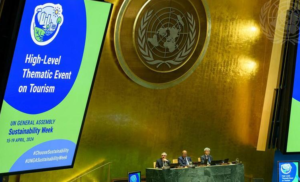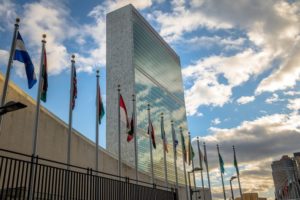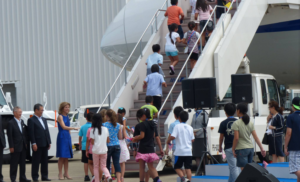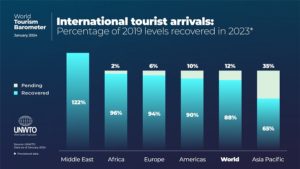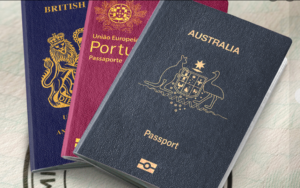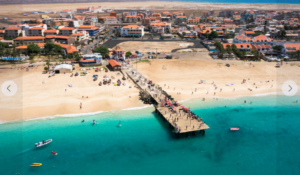Panic-stricken’ pilot’s error likely plane crash cause: Nepal
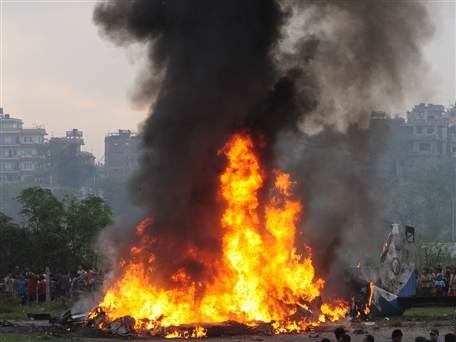
KATMANDU — Nepal said an error by a “panic-stricken” pilot likely caused the crash of an Everest-bound plane that killed all 19 on board.
The twin-propeller Sita Air plane had just taken off on Friday from Katmandu and was headed to the town of Lukla, gateway to Mount Everest, when it plunged into the banks of a river near the city’s airport around daybreak.
“The pilot’s failure to maintain the required radius is a likely cause of the accident,” said senior ministry official Suresh Acharya, adding the plane turned too sharply because it had not gained enough altitude.
The Dornier aircraft, which crashed minutes after take-off, was headed for Mount Everest, the world’s tallest mountain, killing the 19 people on board, including British and Chinese Everest-bound trekkers.
The plane’s right engine burst into flames after being hit by a large bird, causing the aircraft to plummet into the river bank and explode into a huge fireball.
“The preliminary finding of the Civil Aviation Authority notices unusual manoeuvring during the takeoff and the pilot communicated to air traffic control the aircraft was hit by a bird,” said Acharya.
“But a plane crash does not occur simply just because its engine was hit by a bird,” he said, noting incidents when one engine of a twin-engine aircraft has failed and the plane is still able to land safely.
“The pilot may have been panic-stricken,” he added, and “made a steep narrow turn instead of forming a wider radius required to bring the malfunctioning aircraft back to the runway.”
Acharya, a member of a government commission due to report on the cause of the crash within three months, said the pilot should have gained more altitude before trying to return to the airport.
The foreigners all arrived in Nepal on Wednesday and had been slated to begin trekking towards Everest Base Camp on Saturday accompanied by local guides on an expedition organized by English firm Explore Worldwide.
British Prime Minister David Cameron on Friday called the crash “a horrific incident” and said: “I feel for the families concerned.”
Nepal has a poor road network, meaning many tourists, pilgrims and climbers rely on the country’s 16 domestic airlines and 49 airports to reach remote areas,reports China Post.
According to Guardian, Air accident investigators from the UK are heading to Nepal to investigate the plane crash that killed seven Britons .The Air Accidents Investigation Branch said it was sending two staff to Kathmandu to assist local authorities looking into the accident, which killed all 19 passengers shortly after takeoff from Kathmandu airport.
Tributes were paid to the group of Britons, who included the lawyer Ben Ogden, 27, from Buckingham, an Oxford University graduate who worked for the international law firm Allen & Overy. He was on the Everest Base Camp trip to celebrate just having qualified. The firm said the young lawyer, who lived in London, “had an incredibly promising career ahead of him”.
The Britons, named by the local travel company Sherpa Adventures, also included Timothy Oakes, 57, a married father and secondary school adviser for Lancashire county council. He loved mountaineering and was on the trip of a lifetime with an old school friend, his distraught wife, Angie Gaunt, said at the family home in Winwick, Cheshire. She added: “He was going because he always wanted to see Everest. If you love the mountains, it is the ultimate.”
His travelling companion was Stephen Holding, 60, a retired teacher from the village of Barlaston, Staffordshire, who was also a keen mountaineer, according to Keith Finney, brother of his wife, Maggie.
“My sister just wants to say Stephen had gone out on a trip of a lifetime. He had been planning the trip for 18 months and was with a lifetime friend,” he said.
Another victim, Raymond Eagle, 58, a keen fell runner, from Macclesfield, who lived alone, worked for Cheshire East council as a support worker for disabled people. His neighbour Pauline Girdwood said he was very active and ran every day. “This was the sort of thing he did. He did go trekking, he was a fell runner and very, very active in outdoor activities.”
Vincent Kelly, 50, and his brother Darren, 45, were also part of the group, who arrived in Nepal on Wednesday and were due to begin a three-week trek in the Khumbu region around Mount Everest on Friday.
Darren Kelly, a property developer and businessman living in the Isle of Whithorn in Dumfries and Galloway, was originally from Bolton but had moved to the village in recent years, where he renovated property for holiday lets. The vice-chairman of a local diving club, he was described by residents as a “first-class guy” who was active in the community. The club’s treasurer, Chris Harrison said: “He’ll be a great loss to the club but mostly to his wife and family. He was a dynamic and enthusiastic person.”
Vincent Kelly, a company director of Lostock, Bolton, was a “most prolific” and “well respected” supporter of Bolton Lads & Girls Club – raising funds to replace its Astroturf by cycling from John O’Groats to Land’s End – said the club in a statement. “There aren’t enough words to describe just how wonderful Vincent was – a dedicated family man with a generous heart of gold who was a perfect role model for all,” said Mark Brocklehurst, a member of the club’s board.
The seventh Briton to die was named as Christopher Davey, 51, believed to be from Northampton.
The group were travelling with the Hampshire-based company Explore Worldwide, which said in a statement it was “devastated by this news”.
All those on board the plane, operated by the domestic airline Sita Air and bound for Lukla, died
The victims included five tourists believed to be from China, four Nepalese passengers, including Explore’s local tour guide, and the crew.
Aviation accidents involving small aircraft are not uncommon in mountainous Nepal. In September 2011, 19 people including 16 tourists were killed when a Buddha Air flight crashed on a similar route.
In August 2010, 14 passengers including four Americans, a Briton and a Japanese national were killed after a plane heading to the Everest region crashed as a result of bad weather. In December 2010, all 22 passengers were killed when another plane came down.

